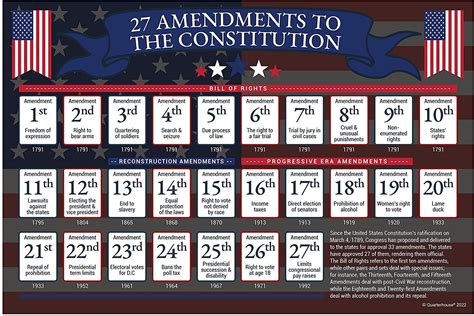How Many Amendments to the Constitution? A Deep Dive into US Constitutional Law
The United States Constitution, a cornerstone of American democracy, has undergone several changes since its ratification in 1788. Understanding the number of amendments and their significance is crucial for any citizen. So, how many amendments to the Constitution are there?
The simple answer is 27. However, understanding the process and impact of these amendments provides a richer understanding of American history and governance.
The Bill of Rights: The First Ten Amendments
The first ten amendments, known collectively as the Bill of Rights, were adopted in 1791 and represent a crucial safeguard of individual liberties. These amendments guarantee fundamental rights such as:
- Freedom of speech, religion, the press, assembly, and to petition the government (First Amendment). This is arguably the most famous and frequently debated amendment.
- The right to bear arms (Second Amendment). This amendment remains a subject of intense political and legal debate.
- Protection against the quartering of soldiers (Third Amendment). While less frequently discussed, this amendment reflects historical concerns.
- Protection against unreasonable searches and seizures (Fourth Amendment). This is vital for protecting individual privacy.
- Due process of law, protection against self-incrimination, and double jeopardy (Fifth Amendment). These are key components of a fair legal system.
- The right to a speedy and public trial (Sixth Amendment). Ensuring fair and timely legal proceedings is crucial.
- The right to a jury trial in civil cases (Seventh Amendment). This protects citizens' rights in civil disputes.
- Protection against excessive bail and cruel and unusual punishments (Eighth Amendment). This amendment addresses fairness in sentencing.
- Guarantee of rights not specifically listed in the Constitution (Ninth Amendment). This prevents a narrow interpretation of the Bill of Rights.
- Reservation of powers to the states or the people (Tenth Amendment). This addresses the balance of power between the federal government and states.
Amendments Beyond the Bill of Rights
The remaining 17 amendments address a wide range of issues, reflecting the evolving needs and priorities of the nation. Some key examples include:
- Eleventh Amendment: Restricts the jurisdiction of federal courts in lawsuits against states.
- Thirteenth Amendment: Abolished slavery.
- Fourteenth Amendment: Grants citizenship and equal protection under the law.
- Fifteenth Amendment: Guarantees the right to vote regardless of race.
- Nineteenth Amendment: Guarantees women's suffrage.
- Twenty-Sixth Amendment: Lowers the voting age to 18.
Each amendment represents a significant moment in American history, reflecting societal changes and struggles for equality and justice. Understanding their context is crucial to comprehending the development of the nation's legal and political landscape.
The Amendment Process: A Difficult Undertaking
The process of amending the Constitution is deliberately difficult, requiring broad consensus across different levels of government. This ensures that any changes are carefully considered and reflect the will of the people. This deliberate complexity reflects the founding fathers' desire to create a stable and enduring framework for governance.
Keywords: US Constitution, Amendments, Bill of Rights, Constitutional Law, American History, Government, Politics, First Amendment, Second Amendment, Voting Rights, Civil Rights, Legal History.
This optimized content addresses the user's query directly, provides comprehensive information, employs relevant keywords for SEO, and maintains a clear and engaging writing style. The structured format using headings and bold text enhances readability. Remember to build backlinks to other relevant content on your site to further boost SEO.
